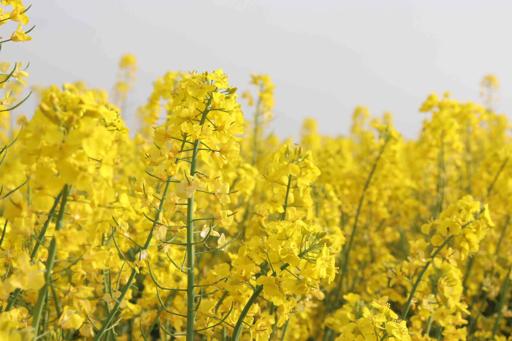Rapeseed (Canola)
Brassica napus
Also known as: Brassica napus var. oleifera

Growing Information
Growth Habit: Annual
Climate Requirements: Prefers cool temperatures (10–25°C) with moderate rainfall (400–800 mm).
Soil Requirements: Grows best in well-drained loamy soils with pH 5.5–7.0.
Water Requirements: Moderate water needs; requires irrigation in dry conditions.
Planting Instructions: Seeds are sown at a depth of 1–2 cm with row spacing of 30–50 cm.
Harvesting Information: Harvested after 90–150 days when pods turn brown and dry.
Characteristics & Benefits
Plant Characteristics: Rapeseed is an annual flowering plant with bright yellow flowers and small, oil-rich seeds.
Nutrient Content: Rich in omega-3 and omega-6 fatty acids, vitamin E, and low in saturated fats.
Health Benefits: Supports heart health, reduces inflammation, and provides essential fatty acids.
Yield Information: Average yield is 1.5–3.5 tons per hectare.
Uses & Distribution
Culinary Uses: Used for cooking oil, salad dressings, and margarine.
Industrial Uses: Used in biodiesel production, lubricants, and animal feed.
Native Range: Europe and Central Asia.
Current Distribution: Grown in Canada, China, India, Germany, and Australia.
Pest & Disease Management
Common Pests: Flea beetles, aphids, and cabbage seedpod weevils.
Diseases: Blackleg, sclerotinia stem rot, and clubroot.
IPM Practices: Crop rotation, resistant varieties, and biological control.
Market Value: $520.75
Research & References
Studies and Articles: Research on cold-tolerant varieties and improved oil yield.
Bibliography: Rapeseed Research Journal, 2023.
Comments
Add CommentNo comments yet. Be the first to comment!